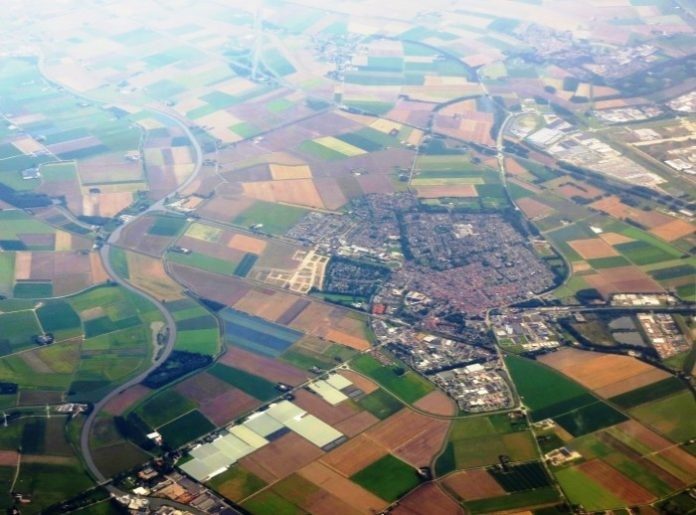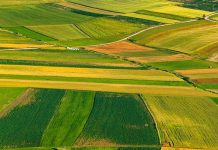The Netherlands, a medium-sized country, with ten times less farmers and 2 ½ times less arable land than Greece, is the first EU food exporter and the second of the whole planet. This achievement is due to the particularly high level of innovation that is applied in the entire agri-food chain and the public authorities of the country. The Dutch government assigned OECD to evaluate the performance of the agri-food sector. This evaluation is part of regular evaluations of the Organization for innovation, productivity and sustainability of the agricultural sector of the member countries.
The evaluation report starts with the presentation of the development prospects of the agricultural sector, followed by the assessment of policies that determines the incentives for innovation, thus economic stability, governance and trust in the institutions. Special presentation takes place for the friendly and foreseeable for investments environment and as well for the contribution of the government and the public services. Finally, the agricultural policies followed and the operation of the system of agricultural innovation are analyzed.
With regards to the innovation system, it causes great impression that by 2011, public funding for research and development focuses exclusively on the nine most exporting sectors of the economy, two of which concern agri-food and horticultural – propagating material. The aggregation of public resources and the integration of all the universities and agriculture innovation institutions into a single network under a common coordination, multiplies the results. Finally, it should be noted that for a long time, Dutch agriculture was based on the actual connection of research – education – production.
Incentives for the acceptance of innovation
The value of innovation is maximized when it is disseminated and adopted by a large number of users. Incentives and policies used for the dissemination of innovations to farmers and the food processing enterprises include:
• Introduction of legislative regulations of gradual implementation of new production practices, such as, for example, new animal breeding procedures or new ways of cultivation of a crop.
• Selective public co-financing operations.
• Grant of guarantees to those applying innovation in order to mitigate the risk between the professional and the bank in order for the professional to pass through the “valley of death”. Alternatively, cover the financial gap between basic research in the public sector and the implementation and creation of a new product from the private sector.
• Financial support for the presentation and demonstration of the benefits of a new technology, a new practice etc. This support can take the form of vouchers which the state can provide to agricultural and other SMEs in order to employ experts.
• Funding to education and special consulting, which helps producers to select and implement innovations in a successful way. This support can also take the form of vouchers for experts’ salary.
• Empowering stakeholders in order to trust and to undertake investments in new products or to change their applied business model.
• Financing networks which bring together producers, entrepreneurs, researchers and intermediaries, in order to jointly address the problems that exist or in order to design and implement an innovation.
In practice
Education, skills development policies and the innovation system of agriculture are the basis of the dissemination and acceptance of new technologies. More specifically, Dutch farmers are in general highly educated, which allows them to be constantly updated and remain competitive. There are many institutions offering advice on a large number of themes, while the advisory system is privatized. Moreover, farmers’ access to education and information is enhanced by the second pillar of the CAP.
The pioneer farmers
The “pioneer farmers”, are those applying first a new technology or technique, amounting to 2% of the farmers. However, a proportion of 14% of the Dutch farmers, makes a significant improvement to the products or to the procedures followed each year.
Such rates are deemed to be particularly high and characterize a manpower with flair to innovation. This flair is enhanced by the recording of the “leading innovations”, of the most innovative sectors, and the analysis of their characteristics from the public authorities. In this way, targeted policy measures are being established.
Obstacles
The report identifies the factors that prevent or instead facilitate the dissemination of innovation. The degree of dissemination of innovation is associated with education, skills, how complex, and also how acceptable it is among the general public. For example, the general public does not accept genetically modified organisms or the operation of very large farms for the production of bio-gas. Furthermore, consulting firms significantly affect the final decision of the stakeholders.
Finally, important role in the acceptance of an innovation have the stability of the governmental policy, economic environment, expectations for the course of the agri-food sector, the liquidity and the financial efficiency, the developmental stage of the economic exploitation and its succession, the degree of uncertainty and the risk to be taken and the degree of enhancement and grant funding of leading innovators.
Nikos Lappas









